Fra Giovanni's Intarsia Polyhedra
The first features a 72-sided sphere, a mazzocchio, and various instruments of the geometer. The second features an "elevated icosidodecahedron," a complex nonconvex polyhedron which can be constructed by erecting a pyramid of equilateral triangles on each face of an icosidodecahedron. The use of the mazzocchio goes back to Uccello. The other polyhedra are based on Leonardo's drawings of "solid edge" models, published in Pacioli's influential 1509 book The Divine Proportion.
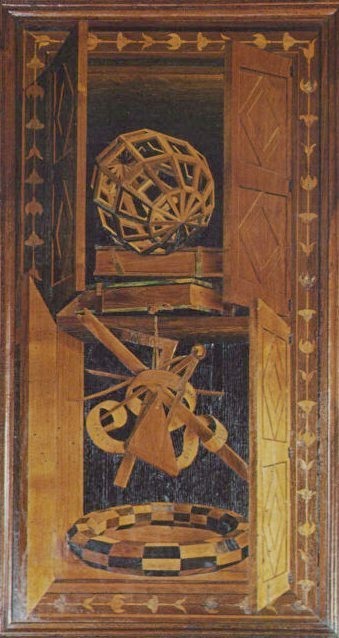
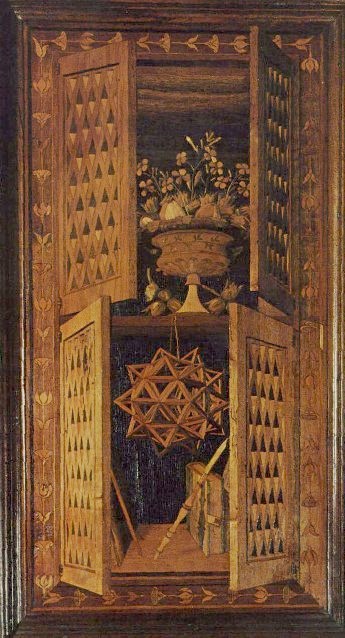
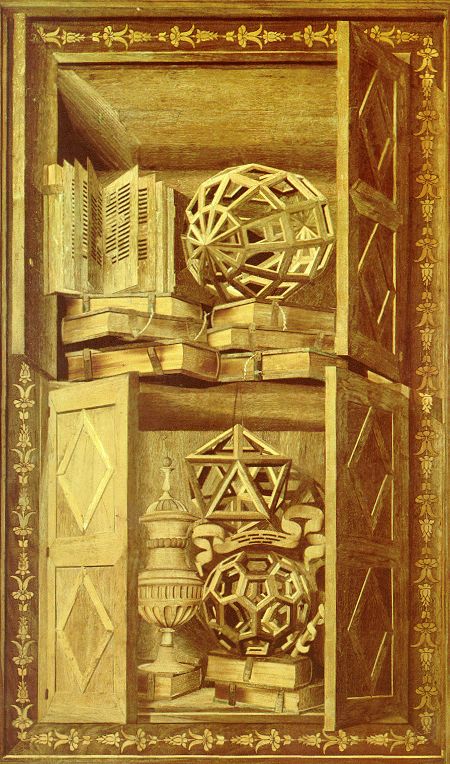
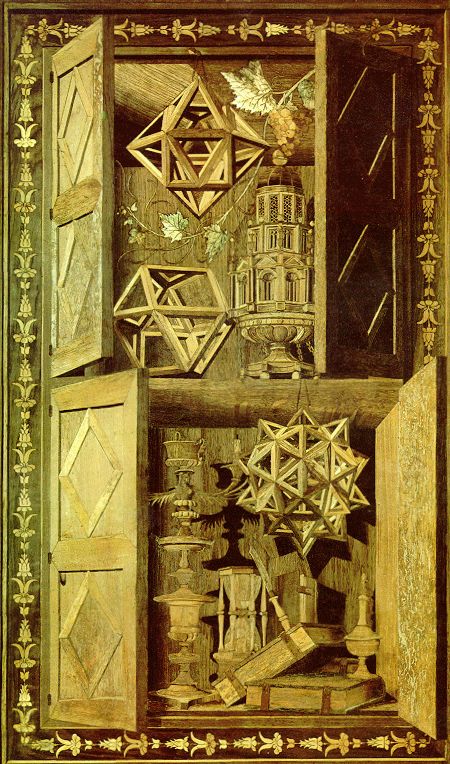
Leonardo's printed drawings were clearly used to provide the outlines. The identical viewpoint and perspective is used in each case, but Giovanni skillfully rotated the images and and adjusted the shadings appropriately.
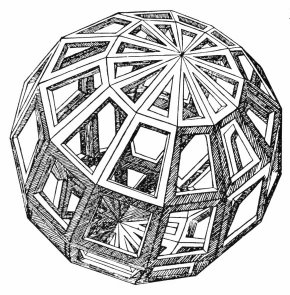
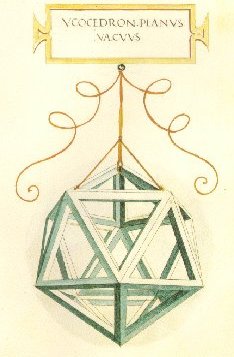
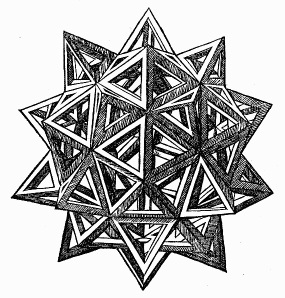
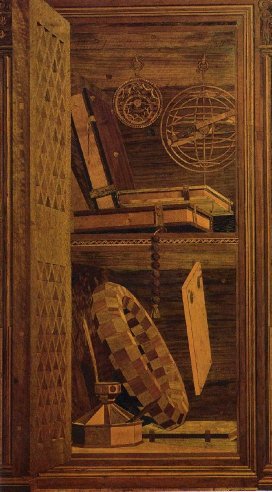 The
examples above were all influenced on Leonardo's drawings in Pacioli's
book. However, there were many spectacular intarsia before that time.
At right is one earlier example, featuring a mazzocchio. It is just
one panel from the richly intarsia-ized Studiolo of Urbino, in the
late 1400's.
The
examples above were all influenced on Leonardo's drawings in Pacioli's
book. However, there were many spectacular intarsia before that time.
At right is one earlier example, featuring a mazzocchio. It is just
one panel from the richly intarsia-ized Studiolo of Urbino, in the
late 1400's.
Fra Giovanni's work is the most impressive of the art in my opinion. Intarsia then died out as an art form in the mid 1500's. This was part of the general trend away from geometric perspective, but also because the technique was denigrated as a "craft" compared to the "art" of painting.
References: See the article by Tormey and Tormey and the book by Cromwell. The first two images above were scanned from the Tormey article, and the third and fourth were sent to me by Peter Cromwell.